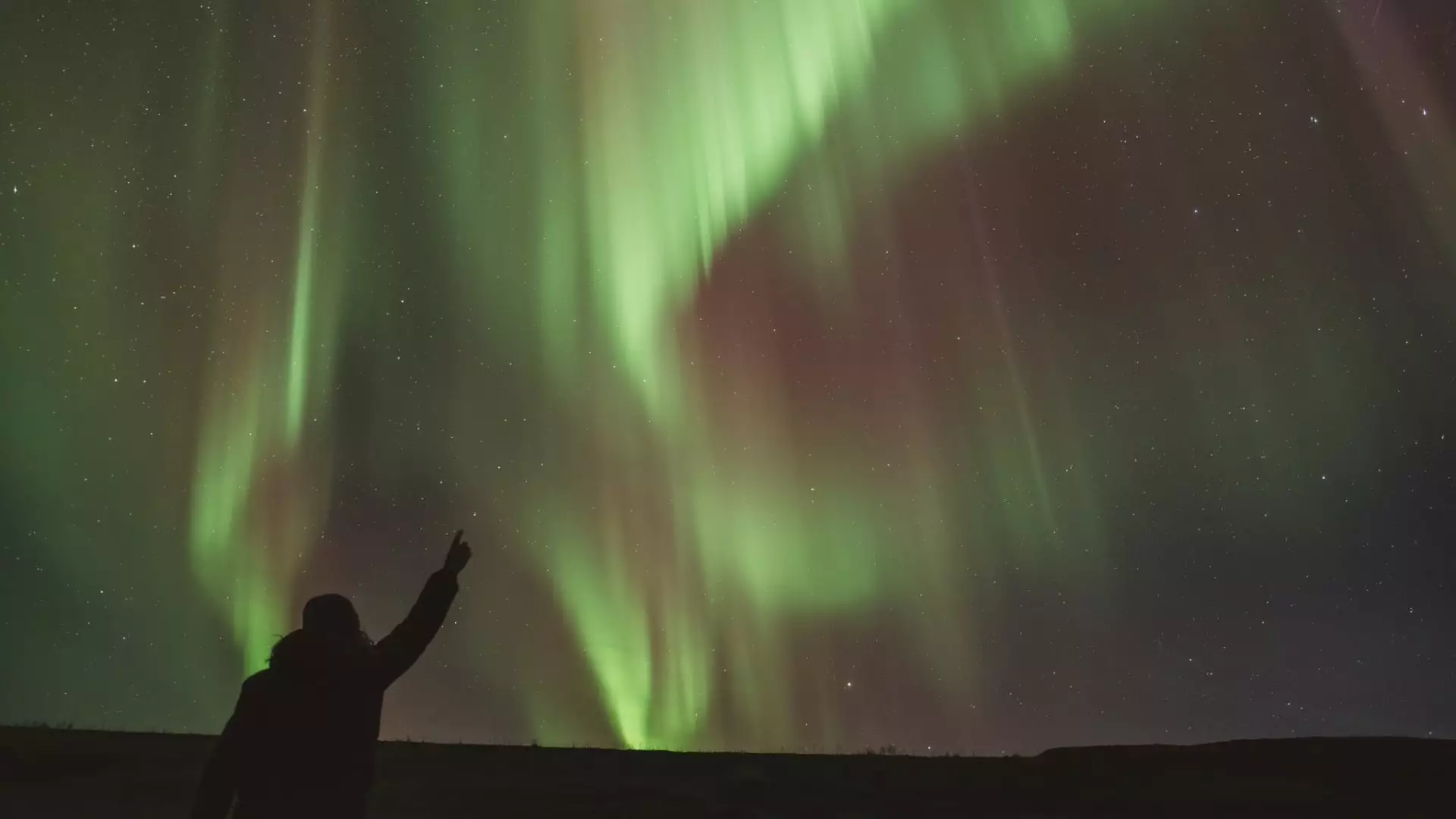In recent years, travelers have begun to embrace a unique dimension of exploration: noctourism. This emerging trend encourages adventurers to venture out after sunset, casting aside the conventional allure of daylight travel. Among the legion of nocturnal explorers is Rebecca Douglas, a dedicated photographer who has made 29 trips to Iceland, with her 30th already booked. Her primary quest? To capture the breathtaking beauty of the aurora borealis, the enchanting Northern Lights that dance across the Arctic skies.
The Northern Lights are not just a spectacle for the eyes; they are a vibrant manifestation of natural phenomena. These ethereal colors—green, purple, yellow, and blue—are birthed from the interaction of solar particles with the Earth’s atmospheric gases. As the current solar cycle peaks, the next four years promise even more spectacular displays, enticing both seasoned photographers and novice sky gazers alike.
Douglas, a professional photographer from Kent, UK, has cultivated her craft since 2010. Her dedication to night sky photography is complemented by her travels across Finland, Norway, and Iceland. Interestingly, Douglas has even captured the Northern Lights in the English countryside, showcasing the phenomenon’s accessibility beyond remote landscapes.
Douglas’s experiences epitomize a broader societal shift, where travelers seek to immerse themselves in the stillness and magic of the night. According to Booking.com, noctourism has been recognized as a key travel trend for 2025, highlighting a desire to escape the crowds and revel in the serene beauty of night. A recent global survey conducted by the company revealed that nearly two-thirds of travelers have contemplated visiting destinations with darker skies for activities like stargazing or witnessing once-in-a-lifetime celestial events.
While capturing the Northern Lights remains a revered goal for many noctourists, a plethora of experiences awaits beneath the starlit dome. From full moon picnics on serene beaches to culinary adventures like nighttime truffle hunting in Italy, the realm of noctourism is vast and varied. Wayfairer Travel noted a significant 25% rise in noctourism experiences over the past year, pointing to heightened interest in activities such as night diving in Australia’s Great Barrier Reef and nocturnal wildlife safaris in Kenya and Zambia—additional options that extend beyond just observing the cosmos.
With the anticipation of unique after-dark experiences, companies like Scott Dunn are leading the charge, suggesting that eclipse chasing could soon occupy a top spot on travelers’ bucket lists. They highlight the remote, light-pollution-free shores of Greenland’s High Arctic as a premier destination for those eager to witness such celestial occurrences. However, not all adventures necessitate distant travels; establishments from Hawaii to Austria are increasingly offering stargazing packages, providing opportunities to delight in the night sky without the need for extensive planning or travel.
The Art of Planning for the Perfect Shot
Diving deeper into her craft, Douglas prefers planning her nocturnal photography adventures independently, steering clear of hotel packages that often cater to larger groups. She is acutely aware of how light pollution from smartphones and camera flashes can detract from her photos. Thus, she prioritizes remote accommodations, ensuring a dark environment that allows her to capture the essence of the aurora borealis unobscured.
The meticulous nature of her planning extends beyond mere location scouting. Douglas utilizes tools like Google Maps to survey potential accommodations for unwanted light sources, proving that the success of her photography hinges on detailed preparation. Moreover, she is mindful of the lunar phases; she schedules her travels around new moons to maximize the darkness of the night sky—ideal conditions for both the auroras and the stunning visibility of the Milky Way.
Teaching the Art of Night Photography
Recognizing the growing interest in night photography, Douglas has also established an online course to educate aspiring auroras photographers. She captures not just the auroras but also other nocturnal wonders like noctilucent clouds—glimmering ice crystal formations high in the atmosphere—and polar stratospheric clouds adorned with hues of a rainbow.
Out in the chilling temperatures that can plunge as low as 5 degrees Fahrenheit, Douglas acts on the belief that “hard work precedes artistry.” Yet, for her, these midnight escapades are not merely laborious; they embody a profound privilege. As the darkness envelopes her, she finds joy not just in the art she creates, but also in the serene, silent beauty that unfolds under the vast night sky.
In wrapping up, the growing phenomenon of noctourism signifies a deeper yearning among travelers to experience the world after dark. Be it the pull of the Northern Lights or the allure of unique nighttime experiences, it seems the night holds a special promise for adventure seekers and photographers alike, transforming the way we think about travel in the years to come.


Leave a Reply